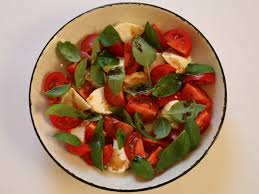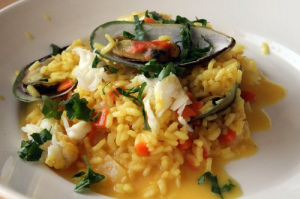Eating Your Way Through Italy Gluten-Free
Posted on June 30th, 2014 by Anna in Uncategorized | No Comments »
Pizza, pasta, focaccia—Italy is famous for its delicious food and carb-heavy meals. However, to a traveler with a gluten intolerance, the thought of being surrounded by tantalizing wheat products can be nightmarish. Luckily, Italian cuisine is imaginative and quick to evolve with the times—in fact, their awareness of Celiac disease has predated that of most other countries, and they even have a National Celiac Association that funds study and promotion of Celiac awareness throughout the country. To say the words, “Senza glutine,” at a restaurant is a request that people are genuinely concerned about, and they will do their utmost to accommodate you. Thanks to this, there is a surprising array of foods suitable for the celiac diet, so that you’ll be able to indulge in Italy’s diverse culinary scene without having to live off of salads for your entire stay.
1. Gluten-free products. To simply ask for your pasta or pizza gluten-free at a restaurant will result in the kitchen fixing you up a plate of fettuccini or gnocchi made from corn or rice flour without question—and they are likely to be some of the best dishes you’ve ever eaten. Celiac disease is such a pressing issue in Italy that people with gluten intolerances even receive a €100 monthly allowance from the government health system to buy gluten-free foodstuffs, which are often sold in pharmacies.
 2. Caprese salad. If you don’t want to make a fuss, there are plenty of staple Italian dishes that don’t involve meat of any sort. An old favorite of these is the antipasto Caprese salad, a delectably simple dish of sliced buffalo mozzarella, tomatoes, and leaves of fresh basil—a guaranteed pleaser even for non-celiacs!
2. Caprese salad. If you don’t want to make a fuss, there are plenty of staple Italian dishes that don’t involve meat of any sort. An old favorite of these is the antipasto Caprese salad, a delectably simple dish of sliced buffalo mozzarella, tomatoes, and leaves of fresh basil—a guaranteed pleaser even for non-celiacs!
3. Gelato. Another necessity for anyone traveling to Italy to taste, gelato is a frozen confection made primarily with milk and eggs, and thus unoffending to even gluten-sensitive palates. In addition to this, any gelato shop you order from will make a point to scoop your gelato from a separate container to avoid contamination from crumbs that may have fallen into the regular supply.
4. Polenta. A less stereotypical Italian dish, polenta is a cultural favorite in the region to the northeast of Venice. A type of cornmeal dish that is either eaten as a porridge, grilled, or fried into a cake, polenta is traditionally eaten with elaborate sides such as mushrooms, tomato salads, and local sausages.
 5. Risotto. What many people don’t realize is rice is a common side dish in Italy, and risotto is the most common way of preparing it. While every region has its own take on the popular dish, it is always prepared the same way: by cooking rice in broth and flavoring it with various meat, fish, and vegetables. Be sure to try it in different cities so you can compare!
5. Risotto. What many people don’t realize is rice is a common side dish in Italy, and risotto is the most common way of preparing it. While every region has its own take on the popular dish, it is always prepared the same way: by cooking rice in broth and flavoring it with various meat, fish, and vegetables. Be sure to try it in different cities so you can compare!
To delve deeper into Italy’s gluten-free food culture, it would help you to know the basics of Italian. Send us an inquiry for information on getting started, or take a look at our different levels of Italian courses.


 na birra, per favore. An important phrase in any language, “One beer, please,” will get you through most social situations until you learn enough Italian to cobble together an actual conversation with someone.
na birra, per favore. An important phrase in any language, “One beer, please,” will get you through most social situations until you learn enough Italian to cobble together an actual conversation with someone.
